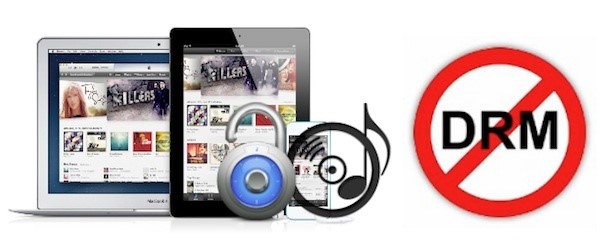
Get to Know Digital Rights Management
3 minutes | Word Count: 591Digital Rights Management is the full name of DRM. There are two types of Digital Rights Management: one is mainly for encrypting data and preventing copy. The other is adopting the digital watermark technology.

Data encryption and DRM copy protection as the core of DRM technology. For the digital content being encrypted, only authorized users can get the decryption key, and the key can be bound to the user’s hardware information. Decryption technology plus hardware binding technology can efficiently prevent illegal copies. Then we can say that this technology can effectively achieve the purpose of protecting the copyright. And currently most computer companies and research institutions use this DRM technology.
Different application fields also use different DRM systems. Below is a list of some DRM different system:
1. DRM in stream media
DRM for media streaming mainly includes: Microsoft Windows Media DRM, Real DRM, etc.
2. DRM for eBook
DRM technology for eBook is quite mature. Here are two of them: Microsoft DAS and Adobe Content Server (previously called Glassbook Content Server).
3. DRM in electronic documents
Here are some types of DRM used in electronic documents: SealedMedia Enterprise License Server, Authentica Active Rights Management, etc.
4. Some other research for DRM
Some researches pay more attention to DRM basic working principle and such DRM system are not used on any specific digital content. Here are some of them: DigiBox and Rights System of Intertrust, Cryptolope of IBM…
What DRM can do to the users that using DRM protected content?
- DRM can make a strict timeline for playing time of the certain content. For example, DRM in BBC iPlayer: users only can keep the TV programs for 7 days once it is played after downloading.
- DRM can limit the playback time: Amazon eBook rental, you only can read the book for once. When finish reading, you do not have permission to read it another time with this rental.
- The binding between license and hardware user uses also makes inconvenience. DRM only let users play DRMed content on certain devices. For instants, you only can play iTunes purchase movies on you iPad, iPhone and cannot play them on Android devices or Windows computer.
How DRM works?
Firstly, the digital video authorization server should be built. Then encode the compressed video files and use the key to lock the files. The encrypted digital program is stored with the KeyID and the URL of the video authorization server in its head. When users are playing video, depending on the KeyID at the head of the video file and the URL information, video licensing server will be connected. After the license confirmation, the key will be sent to unlock the file. Then the video program can be normally played.
It is because of license issue, this kind of video files can not play offline, and you can not play with a third-party player, nor can you play them on other computers. Not to mention that you convert the video to other file format like MP4 and watch them on other MP4 player.
How to get rid of DRM?
Sometimes DRM is really annoying and bring inconvenience to the customers. But there do have a way to remove DRM, and all you need to do is to get DRM removal software to make protected files DRM free and also convert them to the format you like. Then you can easily transfer the converted purchased videos to Galaxy S5, iPhone, iPad, Kindle Fire tablets or other devices of yours as you like.





















